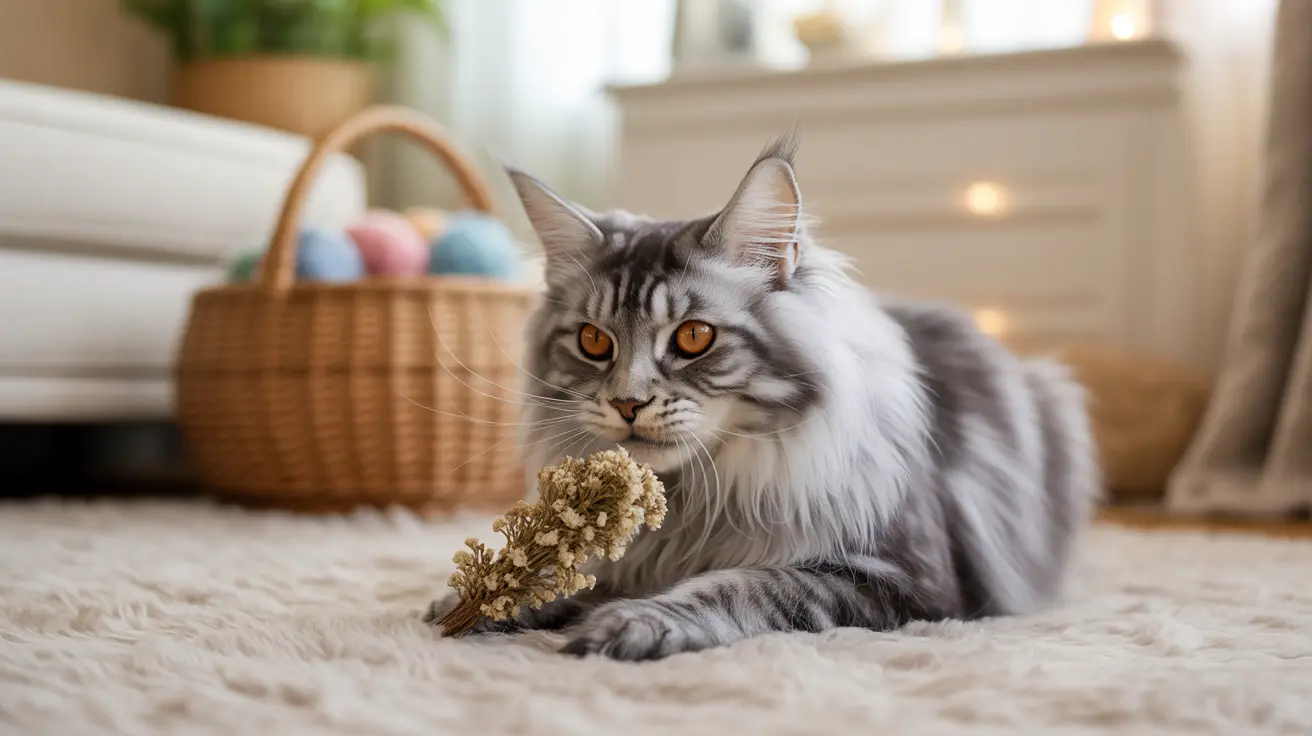Introduction
Finding effective natural sedatives for cats can be crucial for pet owners dealing with anxious felines. Whether it's a dreaded vet visit, travel stress, or general nervousness, natural calming solutions offer a gentler alternative to prescription medications. This comprehensive guide explores various safe, natural options to help your cat stay calm during stressful situations, along with expert advice on their proper use and effectiveness.
Understanding the range of natural sedatives available and how they work can make a significant difference in managing your cat's anxiety while ensuring their safety and well-being. From widely-known options like catnip to lesser-known alternatives, we'll cover everything you need to know about naturally calming your feline friend.
Popular Natural Sedative Options for Cats
Catnip: Nature's Most Famous Feline Relaxant
Catnip (Nepeta cataria) stands as one of the most well-known natural sedatives for cats. This herb contains nepetalactone, a compound that typically creates a euphoric effect followed by calmness in about two-thirds of cats. While some cats become temporarily energetic when first exposed, many experience a peaceful, relaxed state afterward, making it an excellent natural option for mild anxiety.
Valerian Root: A Powerful Natural Alternative
Valerian root offers another effective natural sedative option, particularly for cats who don't respond to catnip. This herb contains compounds similar to those in catnip and can promote relaxation after an initial period of excitement. When properly dosed, valerian root can help ease anxiety before stressful events like travel or vet visits.
Safe Administration and Dosing Guidelines
When using natural sedatives for cats, proper administration is crucial for safety and effectiveness. Always start with small amounts to gauge your cat's reaction, and introduce any new supplement gradually. Most natural calming aids come in various forms, including:
- Dried herbs
- Treats and chews
- Tinctures
- Sprays
- Infused toys
The chosen method should match your cat's preferences and temperament, ensuring they'll actually consume or interact with the sedative.
Alternative Natural Calming Methods
Environmental and Behavioral Approaches
Sometimes the most effective natural sedation comes from creating a calm environment. Consider using:
- Pheromone diffusers
- Soft music or white noise
- Comfortable hiding spots
- Reduced lighting
- Gentle pressure wraps
Herbal Combinations and Supplements
Many commercial natural calming products combine several herbs for enhanced effectiveness. Popular combinations might include:
- Chamomile and valerian root
- Passionflower and lemon balm
- L-theanine with natural herbs
Safety Considerations and Precautions
While natural sedatives are generally safe, certain precautions should be taken:
- Always consult with your veterinarian before starting any new supplement
- Monitor your cat's reaction to new sedatives
- Avoid using multiple calming products simultaneously
- Be aware of potential interactions with existing medications
- Watch for signs of adverse reactions
Frequently Asked Questions
What are the safest natural sedatives for cats to help calm anxiety?
The safest natural sedatives for cats include catnip, valerian root, and chamomile. These herbs have long histories of use and are generally well-tolerated by most cats. Pheromone products like Feliway are also very safe and effective.
How do you use catnip or valerian root to naturally sedate a cat before a vet visit?
Offer catnip or valerian root about 30 minutes before the planned event. For catnip, you can sprinkle dried herb on a toy or mat, while valerian root typically comes in supplement form. Start with a small amount to assess your cat's response.
Are there any risks or side effects with natural calming herbs for cats?
While generally safe, some cats may experience mild digestive upset or excessive drowsiness. Always start with small doses and monitor your cat's reaction. Discontinue use if you notice any adverse effects.
Which natural sedatives are best for cats that don't respond to catnip?
Valerian root, silver vine, and honeysuckle are excellent alternatives for cats who don't respond to catnip. These herbs work through different mechanisms and can be equally effective at promoting relaxation.
Should I consult a veterinarian before giving my cat a natural calming supplement?
Yes, always consult your veterinarian before starting any new supplement regimen. They can advise on potential interactions with existing medications and recommend appropriate dosages based on your cat's specific needs and health status.
Conclusion
Natural sedatives for cats offer a gentle, effective way to manage feline anxiety and stress. While these solutions can be incredibly helpful, success lies in choosing the right option for your cat and using it appropriately. Remember to always prioritize safety, start with small doses, and work closely with your veterinarian to develop the best calming strategy for your feline friend.






